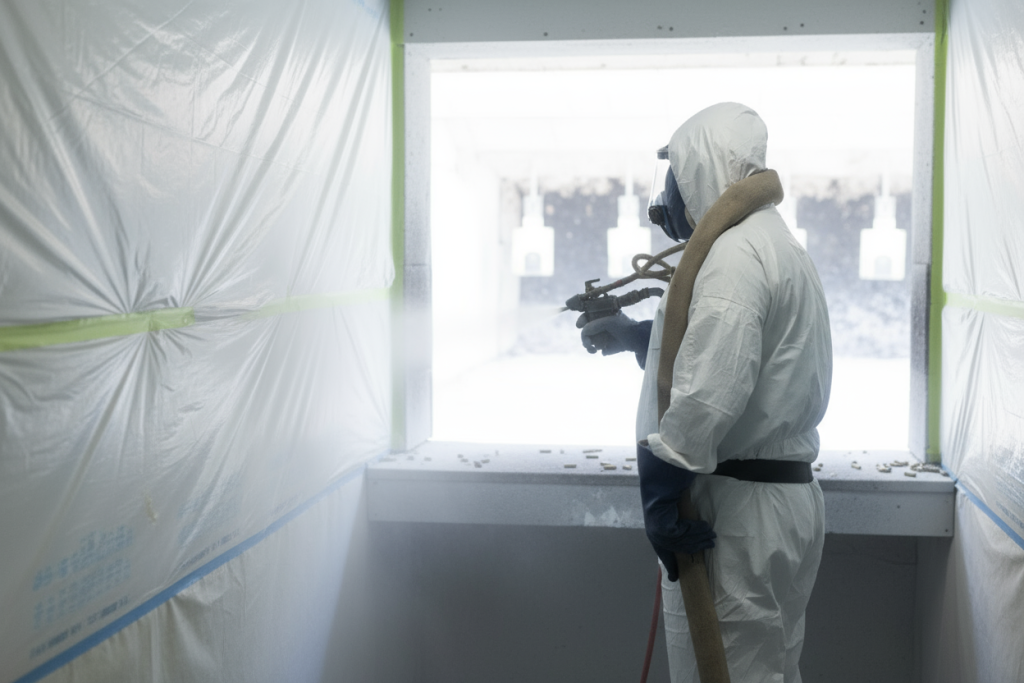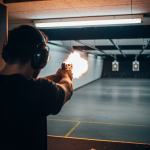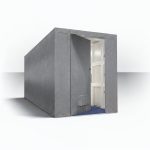Safety has always defined the difference between a well-managed shooting range and a dangerous one. Every shot fired carries force that must go somewhere, and how a range handles that force decides whether people stay safe. The answer, increasingly, lies in material science. One material, in particular, has changed the way the industry approaches protection—polyurea. With its balance of strength, elasticity, and energy absorption, it has become one of the most important innovations in modern range design.
At its simplest, polyurea is a coating created from a reaction between an isocyanate and a resin blend. The result is a dense yet flexible membrane that bonds tightly to concrete, steel, or foam. Once sprayed, it forms a seamless layer that resists wear, impact, and chemical damage. Its speed of curing—measured in seconds—means a facility can be resurfaced and returned to service almost immediately. For shooting ranges, this quality alone is valuable, but what sets polyurea apart is its ability to contain bullets and prevent ricochet.

When a projectile strikes a hard surface like steel, it rebounds with unpredictable force. Even when impact angles are shallow, fragments can travel in dangerous directions. Range operators have long relied on rubber panels or berms to soften those impacts, but those materials break down, trap lead, and require frequent replacement. Polyurea coatings offer a cleaner and more effective alternative.
Through careful formulation, coatings such as ArmorThane’s anti ricochet coatings combine elasticity with tensile strength, allowing the surface to flex and absorb impact energy rather than reflect it. The bullet slows, embeds, or disintegrates without creating hazardous backscatter. Unlike layered mats, the sprayed surface stays uniform, which helps eliminate weak points where cracks or gaps might form.
Over time, range designers began realizing that this type of coating could serve more than one purpose. It not only prevents ricochet but also acts as a protective barrier for the underlying structure. The constant pounding from live fire wears down walls and backstops, but polyurea cushions that impact. This means fewer repairs, less maintenance downtime, and a longer service life for the facility. The coating itself can be applied to floors, walls, or even steel bullet traps, forming a continuous shell of protection.
What makes this technology more impressive is how adaptable it has become. Polyurea can be tailored to suit both indoor and outdoor environments. In indoor ranges, it helps reduce noise by dampening vibration and absorbing some of the acoustic energy produced by gunfire. In outdoor setups, it resists moisture, ultraviolet exposure, and temperature swings that would normally cause other coatings to degrade. Its chemical resistance keeps it stable even in contact with cleaning solvents, gunpowder residue, or lead dust—substances that often shorten the life of other materials.
The growth in demand for shooting range coatings mirrors the shift toward safer, cleaner, and more environmentally responsible facilities. As public awareness about lead exposure and sound pollution grows, range operators are seeking new methods to reduce both hazards. Polyurea’s seamless barrier helps seal in contaminants, preventing them from leaching into soil or groundwater. The material’s impermeable surface also makes cleanup easier since debris and lead fragments stay on top rather than embedding in cracks or seams.
From a design perspective, the use of polyurea has given range architects new flexibility. They can now build backstops and walls that integrate ballistic safety with durability without relying solely on heavy armor plating. The coating works in concert with ballistic foam or rubber aggregates to form energy-dissipating systems that keep shooters protected. Its use extends beyond commercial gun ranges into military and law enforcement training centers, where live fire exercises place enormous stress on structures.
At the engineering level, the science behind polyurea’s success lies in its ability to distribute stress. When a bullet strikes the coating, the polymer chains stretch instead of shattering. That stretching spreads the force over a larger area, lowering the impact energy at any single point. This same quality makes it ideal for use in bullet containment systems, where managing kinetic energy is vital.
ArmorThane’s team has been among those leading this evolution. Through testing and field feedback, they have refined formulas that perform in the most demanding ballistic environments. Their coatings are designed to maintain flexibility at varying thicknesses and can be applied to vertical or overhead surfaces without sagging. The result is a solution that can handle thousands of rounds before showing visible wear. That endurance saves both time and cost for operators who otherwise replace or repair backstop panels frequently.
Another key advantage comes from the way polyurea bonds to different materials. Concrete, for example, tends to crack and spall under repeated impact. When coated with polyurea, it gains a protective skin that distributes force and prevents those cracks from spreading. On steel, the coating serves as a corrosion barrier, protecting against rust and extending the metal’s usable life. This dual benefit—ballistic protection and surface preservation—illustrates why so many new facilities now specify polyurea-based coatings during construction.
From a safety standpoint, the presence of polyurea has transformed how range operators think about risk. Instead of accepting ricochet as a constant concern, they can design environments where energy absorption is built in. This shift has created a measurable drop in on-site injuries and equipment damage. Trainers and shooters alike report greater confidence when working within these spaces.
While its ballistic properties are a major focus, polyurea’s value also extends into maintenance and aesthetics. A coated range looks cleaner and stays that way longer. Dirt, residue, and spent material are easily washed away, leaving a professional finish that doesn’t deteriorate over time. Because the coating cures quickly, upgrades can happen without closing a facility for long stretches, which helps maintain operations.
Looking ahead, the continued development of specialized formulations suggests even broader potential. Researchers are experimenting with coatings that integrate recycled materials or advanced fillers to further increase impact tolerance. Others are testing ways to embed energy-dissipating layers beneath the coating to expand its containment capacity. These efforts continue to push the boundaries of what polyurea can do for ballistic safety.
The use of polyurea in shooting range design marks a practical step forward for an industry that depends on precision and protection. It demonstrates how science and engineering can solve problems once considered unavoidable. Each sprayed surface becomes a safeguard—a layer of quiet assurance that protects both the people and the structures behind it.
In a field where safety leaves no room for compromise, polyurea stands as one of the most dependable tools available. Its success rests on simple principles: absorb impact, prevent ricochet, and endure under stress. ArmorThane and other innovators continue to refine that formula, proving that progress in range safety is not about replacing tradition but enhancing it.
Through materials like polyurea, the modern shooting range has become not just a place for skill and discipline, but also an example of how technology can make every environment safer for those who enter it.






